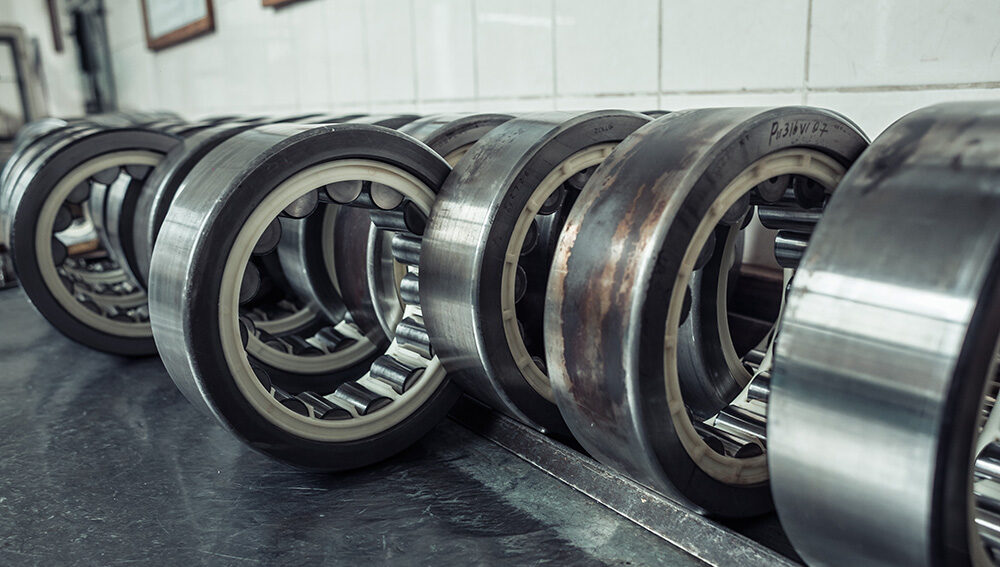
How to Maintain Your Needle Bearings
Needle roller bearings, like other types of bearings, play a big role in how efficiently your machines operate. Any debris or dirt that contaminates the needle bearing will eventually cause premature wear and tear, which may result in mechanical failure and/or roller misalignment.
Since bearings are also not resistant to corrosion or oxidation. The environment in which needle roller bearings operate will also affect their performance and lifecycle. Bearing failures are more common when the bearings are exposed to wet environments and corrosive chemicals, or if lubricated with low-quality grease.
In this step-by-step needle bearing maintenance guide, we’ll highlight everything you can do to prevent premature wear and tear and total failure.
Let’s start first with selecting the right lubricant.
Step 1: Selecting the Right Lubricant
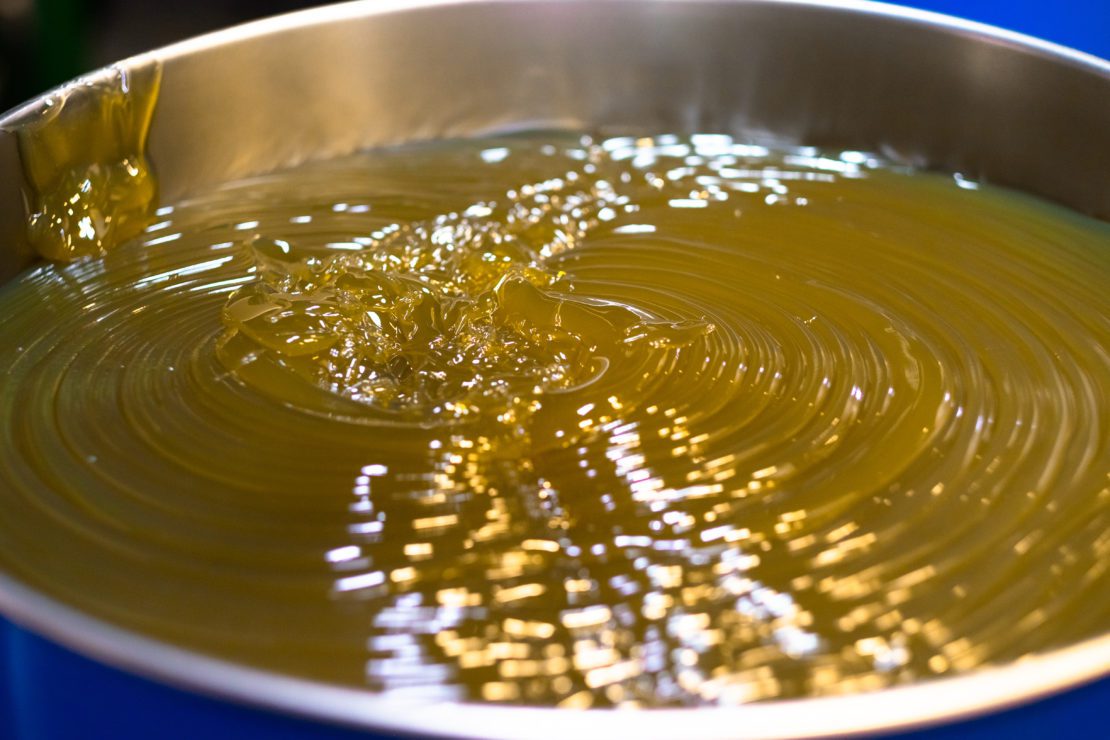
Lubrication is needed on the rolling elements of needle bearings to reduce friction, prevent corrosion and contamination, and to extend the overall life of the bearing and other components.
There are mainly two types of lubricants: grease and oil. Grease lubricants are often used to lubricate needle roller bearings, but oil lubricants are needed for high-speed or high-temperature applications.
When selecting the right type of grease lubricant, consider the formulation of the product, including any thickeners and additives, then choose the right product for the bearing’s operating conditions. Grease lubricants are typically given an NLGI (National Lubricating Grease Institute) grade number which is measured by the worked penetration range.
When selecting an oil lubricant, you will need to look at the oil’s viscosity index. The viscosity you need depends:
- Type of Bearing
- Operating Temperature
- Operating Speed
- Operational Load (Heavy, Normal, etc.)
Selecting the right type of lubricant is only the first step to proper needle bearing maintenance. The next step is knowing when and how often to lubricate your bearings.
Step 2: Lubricating Your Needle Bearing
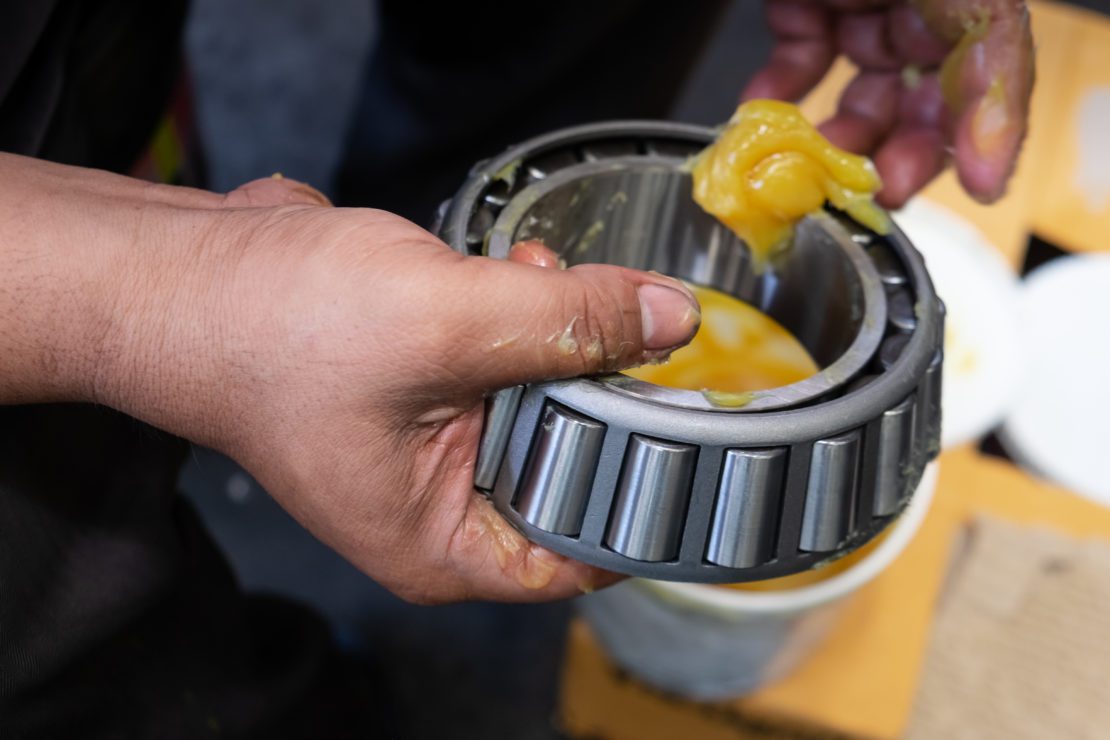
When it comes to needle bearing maintenance, the most common mistake is using the wrong lubrication method. This can actually negatively impact the overall life of the bearing.
You can lubricate bearings either manually or with an automated system. We recommend using an automatic lubrication system for better efficiency.
The main methods for bearing lubrication are:
- Drip-Feed: This method is generally ideal for smaller, lighter, and slower applications. In this process, you would use a needle valve to meter out oil at regular intervals, which you can adjust when required.
- Splash-Feed: Splash-feed only works on horizontal applications, and is particularly great for high-speed and high-temperature applications. In this method, the lubricant is splashed or slung upon the bearings by other moving parts that are regularly dipped in the lube.
- Force-Feed: Force-feed is a good method for heavy-load and/or high-speed applications. This method uses a pump that circulates lubricating oil through a cooler and filter to a distribution system that directs the oil to all the bearings.
Common Lubrication Mistakes
Needle bearings require the right lube applications to offset forces that include temperatures, friction, axial and radial loads, and vibrations. Using an incompatible oil or grease for the type of bearing and its application is a common mistake that can reduce the bearing’s performance and life.
Additionally, when relubricating needle bearings, don’t forget to clean the bearings first; dirt in the system can cause pitting, extra heat, increased friction, and may eventually cause the bearings to freeze.
Other common lubrication mistakes include:
- Selecting the Wrong Type of Lubricant
- Using Too Much Lubricant
- Not Using Enough Lubricant
- Lubricating When It’s Not Needed
Step 3: Knowing When to Relubricate
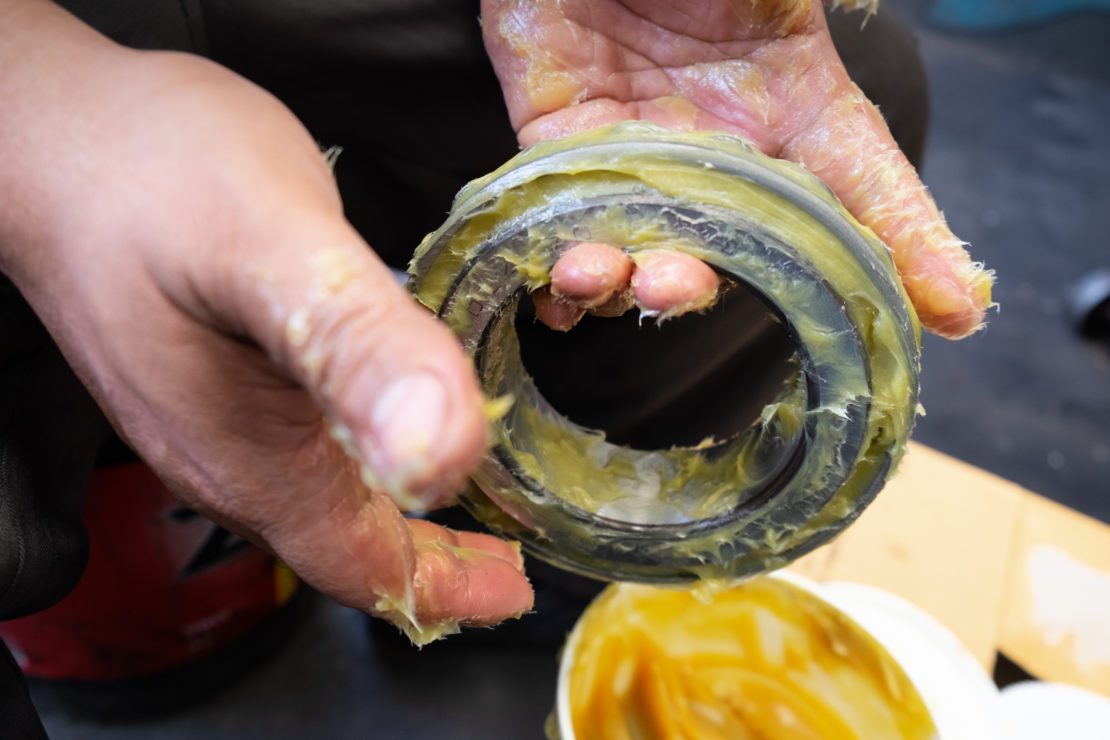
As previously mentioned, one of the most common lubrication mistakes is applying oil or grease lubricant when it’s not needed.
Knowing when to relubricate is just as important as knowing what type of lubrication to use. You should not lubricate bearings every month or week. Instead, you should follow specific manufacturer instructions in the maintenance manual.
Typically, relubrication intervals will not be time-based, but instead depend on the performance of the system and the operating environment. You should monitor friction levels and lubricate your bearings depending on the specifics of the application, including load size, speed, and the type of bearing you have.
Grease lubricants will deteriorate as the operating hours increase. Therefore, follow the manufacturer’s guidelines for correct lubrication intervals, which depend on the type of grease, and the speed and dimensions of the bearings. For oil lubricants, the lubrication intervals depend on the type of lube system that you’re using, as well as the operating conditions.
Step 4: Ensuring Proper Mounting
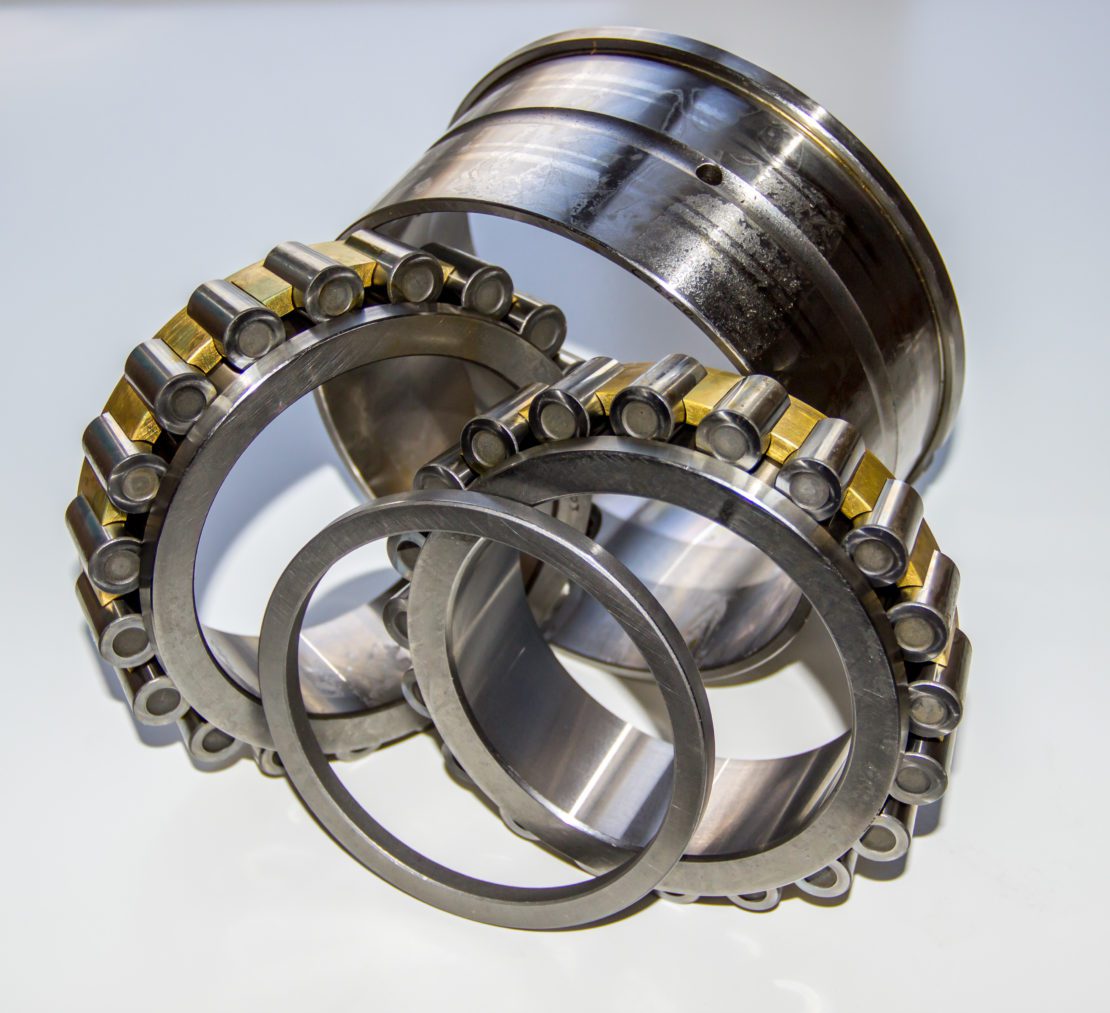
Before mounting your needle bearings, it’s important to understand the assembly tolerances. The most common fitting practice is J6/H7 clearance and fit guidelines. It’s also important to select the right type of shaft.
Universal Bearings can machine custom shafts that are designed for your specific needle bearing, so you’ll never have to worry about selecting the right shaft size and type.
There are also ISO standards around mounting/installation that should be followed. You can mount bearings with either a cylindrical or tapered bore. There are three types of procedures: mechanical/cold, hot, and hydraulic. Hot and hydraulic mounting are best for large bearings, but you can also hot mount small-to-large bearings with a cylindrical seat type. Mechanical/cold mounting is a good mounting procedure for small-to-medium bearings with a cylindrical or tapered seat type.
Bearings with cylindrical bores are typically mounted using the press fit method or with a hammer and mounting sleeve. If it’s a large bearing, you will need to heat the bearing first. Bearings with tapered bores are mounted on a tapered or cylindrical shaft with an interference fit. You typically use an adapter or withdrawal sleeve for mounting. The types of tools you’ll need depend on the mounting procedure, bearing size, and seat type.
After mounting, we recommend performing an inspection to ensure proper mounting of your needle bearing.
Step 5: Continually Inspecting for Signs of Damage
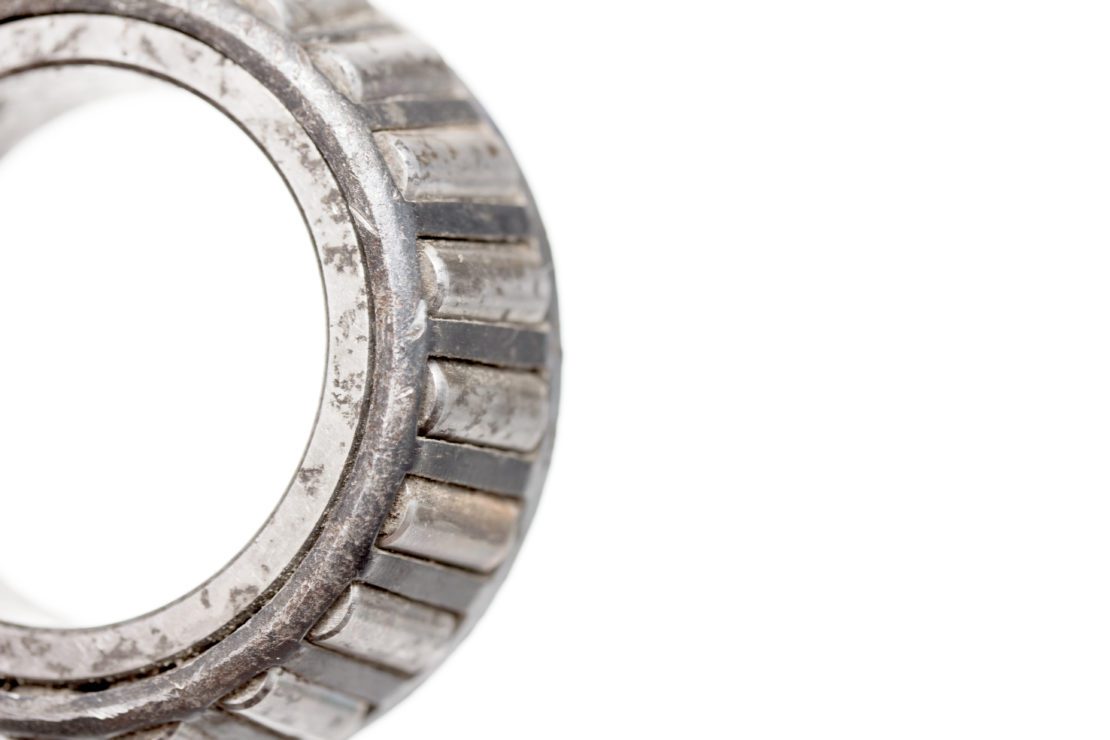
You also need to frequently inspect your bearings for signs of wear and tear and other damages.
We recommend creating a needle bearing maintenance program for your plant. This will ensure that your employees understand when inspections should be performed and how often bearings need to be relubricated.
The most common causes of bearing failures are improper lubrication, contamination, improper mounting, and fatigue.
These following signs of damage indicate that a bearing may not have been properly installed or maintained:
- Flaking on Raceway
- Peeling or Cracks
- Spalling (Scratches)
- Smearing (Rough Surface)
- General Wear (Rough & Scored Surface)
- Discoloration
- Rust & Fretting
- Skewing Rolling Element
The solutions to these depend on the cause. Whether the failure was caused by improper installation/mounting, improper lubrication, or unfavorable operating conditions, correcting the condition is critical to proper machine operation and employee safety.
Still Have Questions? Contact Universal Bearings Today!
Universal Bearings is a leading custom needle roller bearing manufacturer and one of the only independent loose needle roller suppliers in the world. The clients we serve have come to expect exceptional customer support and product quality—and that’s what we deliver every time.
We’re also ISO-14001, ISO-90010, and IATF-16949 certified. If you would like to learn more about our custom manufacturing process or have general questions about needle bearing maintenance, please reach out to us today.



